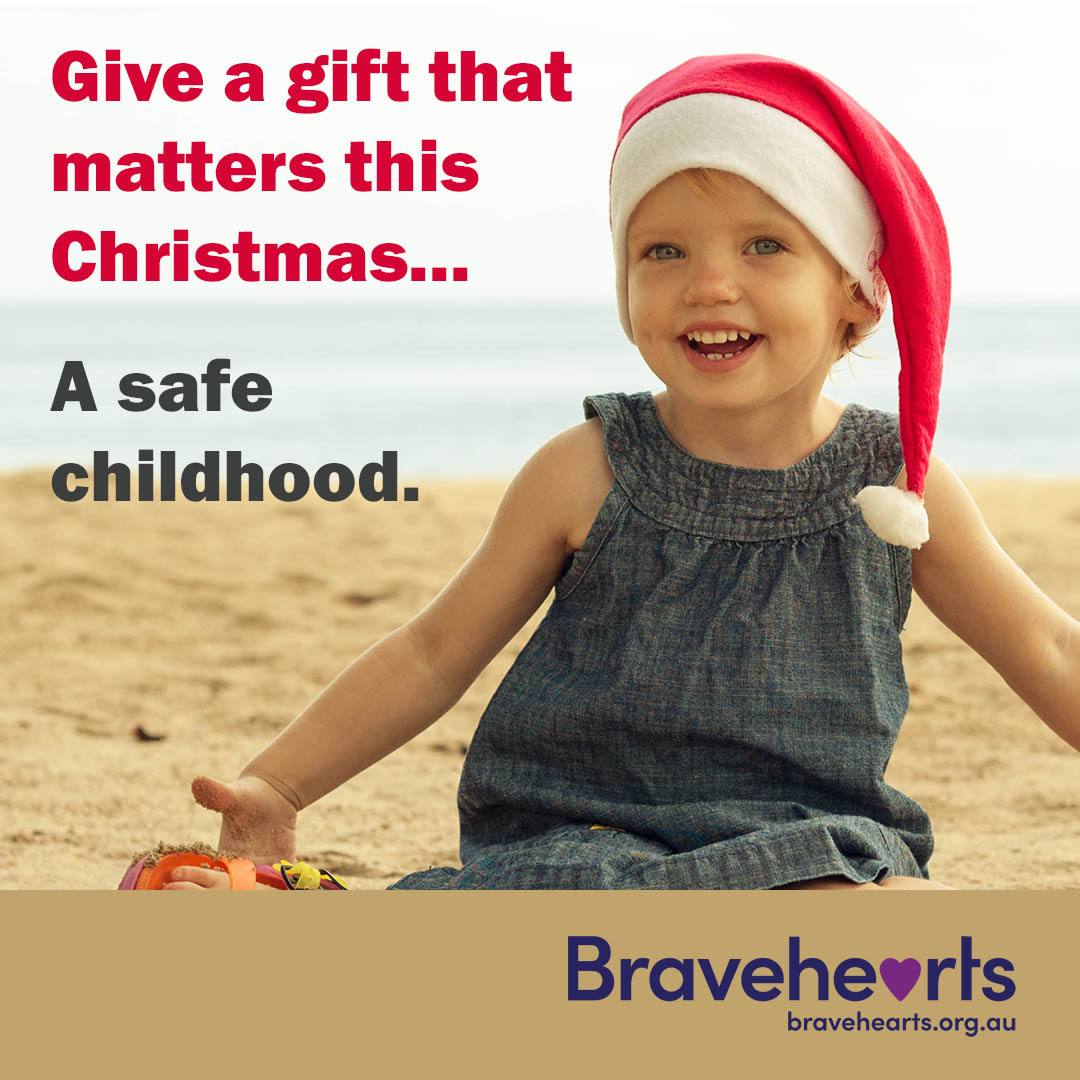Research + Reform
-
Stats & Facts
- Prevalence of child sexual abuse
- Nature of child sexual abuse: risk factors & dynamics
- Disclosure of child sexual abuse
- Harmful sexual behaviours (incl. peer-instigated abuse)
- Child sex offenders
- Convicting, treating & managing child sex offenders
- Child sexual abuse & religious organisations
- The impact of child sexual abuse
- The cost of child sexual abuse
- Child sexual abuse: prevention & education
- Community views on child sexual abuse
- Online risks, child exploitation & grooming
- Research
- Reform & Submissions
Helpful Links
- Home > Research + Reform > Stats & Facts > Community views on child sexual abuse
Community views on child sexual abuse
Findings from the First Wave of The Australian child sexual abuse attitudes, knowledge and response study (National Centre for Action on Child Sexual Abuse, 2024) found that the community’s awareness of child sexual abuse as a prevalent issue and knowledge of certain characteristics is high. For instance:
- 89% agreed/strongly agreed that there are many more victims and survivors in the community than people realise
- 86% agreed/strongly agreed that child sexual abuse is much more common than most people realise\
- 62% reported it as likely/very likely/certain that someone they knew had been sexually abused as a child.
However, many also think it is not an issue they need to personally worry about. For instance:
- About one-third (31%) agreed/strongly agreed that child sexual abuse doesn’t directly impact them, and 3 in 10 (30%) were neutral (‘neither agree nor disagree’) on the topic
- More than half (56%) did not agree that child sexual abuse happens in the area where they live.
- About 1 in 6 (17%) agreed/strongly that there are many more urgent issues facing Australia than child sexual abuse
- The same proportion (17%) reported it as unlikely/very unlikely that anyone they knew had been sexually abused as a child.
- Less than half (48%) agreed/strongly agreed they know what to do to help keep children known to them safe from child sexual abuse
4 in 10 (40%) respondents agreed/strongly agreed that older children have a responsibility to actively resist adults’ sexual advances. About 1 in 8 (12%) also agreed/strongly agreed that adolescent girls who wear very revealing clothing are ‘asking’ to be sexually abused.
In 2021, the Australian Childhood Foundation conducted the latest in their series of national community attitude tracking studies about child abuse and child protection (previous surveys were conducted in 2003, 2006, and 2010). Key findings from the 2021 survey included:
- 1 in 3 Australians would not believe children if they disclosed that they were being abused
- 1 in 5 Australians are not confident of being able to recognise that a child is being abused or neglected
- 1 in 5 lack the confidence to know what to do if they suspect that a child is being abused or neglected
- Child abuse rates lower than problems with public transport and roads on a list of community concerns, and level of community concern about child abuse has not changed since the 2003 survey
- 54% felt so poorly informed about child abuse that they were unable to guess numbers of reported cases, an increase of 11% from the 2006 survey
- 44% report feeling tense and anxious when they take part in a conversation about child abuse, an increase of 16% from the 2010 survey
- 86% of adults surveyed believed that the community still needs to be better informed about the extent and nature of child abuse in Australia
- 80% of Australian believed that Commonwealth and State Governments should invest more money in protecting children from abuse and neglect (Tucci & Mitchell, 2021).
The results of the 2021 study reflected earlier findings from the 2003, 2006 and 2010 surveys – there was little change in community attitudes to child abuse and child protection over the eighteen years (Tucci & Mitchell, 2021).
A significant number of people had identified child abuse or neglect in the previous five years – 22% had witnessed physical abuse of a child or teen, 18% had had a child or teen disclose that they were being abused or hurt by an adult, and 18% knew of a child or teen who had experienced sexual abuse or exploitation online. Of those who had identified a case of abuse or neglect, just 16% had reported concerns to child protection authorities, and 14% had reported to police. One in six (17%) had done nothing, while approximately one in three discussed their concerns with a friend or family member for advice. Of those who took no action, 22% didn’t know what was the right thing to do, 25% were worried about making a false allegation, and 24% didn’t want to get involved (Tucci & Mitchell, 2021).
Almost a third of Australians (32%) believe that children can make up stories about being abused. A further 35% oare unsure whether or not to believe children’s stories about being abused. Paradoxically, 85% believe that children can be emotionally harmed if adults do not believe their claims of abuse (Tucci & Mitchell, 2021).
Australians ranked child abuse 13th on a list of community issues, behind issues relating to transport, traffic and roads (Tucci & Mitchell, 2021).
Almost 1 in 5 Australians believed that children were unlikely to know the person who abused them (i.e. abuse is perpetrated by strangers) (Tucci & Mitchell, 2021).
A recent review of public perceptions of sexual offenders in the United States revealed prominent institutional myths surrounding sexual offending and offenders. The literature reviewed in this study highlighted 4 primary myths that are prevalent in public perception – 1) the myth of stranger danger: that most perpetrators of sexual violence do not know their victims; 2) the myth of “crime on the rise”: that sexual offences are becoming more prevalent and that men who commit sex crimes are more dangerous than other types of offenders; 3) the myth of offender homogeneity: that all sexual offenders make up a homogenous group of “specialist” criminals; and 4) the myth of unreformability; that sexual offenders always recidivate at high rates and that treatment is ineffective. While the literature reveals that attitudes towards sex offenders are generally negative, more negative beliefs about offenders are held by females than by males. The authors also found that myths are generally supported by and perpetuated through the media, with one-third of the articles reviewed relating to sexual offence portrayal in the media including at least one sexual offender myth (Zatkin, Sitney, & Kaufman, 2021).
Research published by the Australian Centre to Counter Child Exploitation (2020) has found that the top two concerns relating to online safety of children and young people held by parents/carers and other key influencers are: viewing of inappropriate content (22%) and cyberbullying (16%), while just 3% reported online grooming as a concern. Almost one quarter (21%), meanwhile, felt that it was likely that online child exploitation could happen to their child or a young person they know; although the majority (89%) assumed that their child would tell them if something occurred to them online (ACCCE, 2020).
A number of research studies have suggested that while the public are supportive of treatment for sex offenders, including child sex offenders, they are doubtful about the efficacy of treatment – the opinion that child sex offenders are untreatable has been described as “probably the most deeply entrenched belief about sex offenders” (Federoff and Moran in Thakker, 2012:160; cited in Richards, 2018).
A study of victims’ attitudes to sex offenders and sex offender legislation found that victims of sexual abuse reported more positive attitudes toward sex offenders than did non-victims. Additionally, while victims and non-victims did not differ in their attitudes towards sex offender treatment, those who were victimised more often agreed that sex offenders should receive mandated treatment compared with those who did not report sexual abuse (Spoo, Kaylor, Schaaf, et al., 2017).
References
Australian Centre to Counter Child Exploitation (2020). Online child sexual exploitation: Understanding community awareness, perceptions, attitudes and preventative behaviours. Canberra: ACCCE.
National Centre for Action on Child Sexual Abuse (2024). The Australian child sexual abuse attitudes, knowledge and response study (Wave 1). https://nationalcentre.org.au/research/australian-child-sexual-abuse-attitudes-knowledge-and-response-study/
Richards, K. (2018). Born this way? A qualitative examination of public perceptions of the causes of pedophilia and sexual offending against children. Deviant Behavior, 39(7), 835-851.
Spoo, S., Kaylor, L.E., Schaaf, S., Rosselli, M., Laake, A., Johnson, C., Jeglic, E.L. (2017). Victims’ attitudes toward sex offenders and sex offender legislation. International Journal of Offender Therapy and Comparative Criminology, 62(11), 3385-3407.
Tucci, J., & Mitchell, J. (2021). Still unseen and ignored: Tracking community knowledge and attitudes about child abuse and child protection in Australia. Ringwood, Victoria: Australian Childhood Foundation.
Zatkin, J., Sitney, M., & Kaufman, K. (2021). The relationship between policy, media and perceptions of sexual offenders between 2007 and 2017: A review of the literature. Trauma, Violence & Abuse, DOI: 10.1177/1524838020985568.
 BACK
BACK


